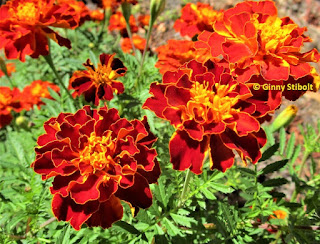 |
| Wear gloves to harvest parsnips, because the foliage is toxic. |
Parsnip (Pastinaca sativa) is a biennial that is similar to carrots (and is in the same family) where the crop is the tap root. In early fall, I planted the seeds directly into deeply prepared garden soil. I planted my first carrot seeds at that time as well. I just barely covered the seeds with fine soil and watered them and the carrots thoroughly several times a week. The parsnip seeds took a week or so longer to germinate than the carrot seeds.
I knew that they have a fairly low germination rate and that the seeds don't stay viable until the next season, so I planted the whole seed package in a half row about 24" x 18". I thinned the seedlings once so that there would be adequate room for root expansion. Some gardeners germinate the seeds in between damp or wet paper towels to have more control. Those that germinate can then be transplanted into the garden at just the right distance from each other. Do this early, only a few days after germination, because if you wait too long, you'll disturb their roots, and they may not recover.
Warning! The shoots and leaves of parsnip must be handled with care, as its sap contains phototoxic chemicals that can cause blisters on the skin when it is exposed to sunlight. Toxicity can also affect livestock and poultry, so wear gloves when weeding, thinning, or harvesting this crop, and then compost the foliage.













